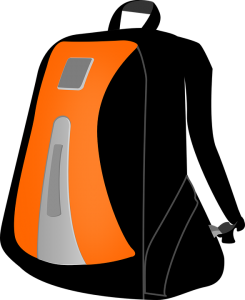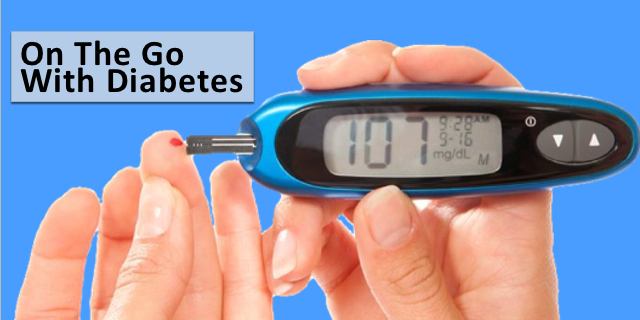What’s A Diabetes Kit?
If you or someone you care for has Type 1 Diabetes, creating a kit is a must.
Highs and lows are part of life, especially for children and adolescents with Type 1 diabetes, simply because they are growing. A diabetes kit is a collection of the tools you need to deal with the extreme highs and lows that can happen with Type one diabetes. It is added insurance in case something happens.
The Diabetes Kit
 The first step in creating a kit is buying an insulated bag or backpack.
The first step in creating a kit is buying an insulated bag or backpack.
Now to fill it. Here’s a useful list of essentials.
- a blood glucose meter with glucose test strips
- a lancet
- alcohol wipes to clean the testing site
- fast acting insulin in case blood glucose is too high
- a syringe (even if the individual with diabetes uses an insulin pump, it’s important to always carry a syringe)
- glucose tablets, fruit drink, candy or any other fast-acting simple carbohydrate for low blood sugar
- a notebook to record what happened
- a pen
- emergency contact information
- diabetes card
- glucagon kit for severe hypoglycemia (low blood sugar)
- directions on using the glucagon kit
- ketone urine test strips
What is glucagon? Why include it in the diabetes kit?
Glucagon is a hormone produced by alpha cells of the pancreas. This hormone tells the liver to release stored glucose (called glycogen). The kit should contain a syringe that has been pre-filled with diluting solution and a vial of glucagon.
The glucagon kit is used for severe hypoglycemia. It’s necessary for a number of instances. If the person with type 1 diabetes is not able to eat or drink a fast-acting simple carb, or is unconscious–use glucagon to rescue. Sometimes, even with repeated consumption of a fast acting simple carb, blood sugar can stay low. Again use the glucagon kit. The glucagon kit is a must if the person with diabetes is having seizures.
Why urine strips in the diabetes kit?
The urine strips are used to measure ketones. Ketones are a product of the chemical reaction of burning fat for energy. This occurs when there is too little insulin in the blood.
Physical signs that the body has too little insulin are nausea, vomiting and/or abdominal pain, being tired, thirsty, or feeling confused. Often the breath smells fruity.
The American Diabetes Association recommends testing for ketones if the blood sugar level is above 300 mg/dL.
Your Thoughts
Type 1 diabetes doesn’t have to hold people back from traveling, being active, enjoying life. We invite you to share your ideas and tips on living with Type 1 Diabetes in the comments.







All good supplies to have in a handy case…but keeping a glucagon injection supply on hand is difficult (as they expire) and rarely if ever used so I stopped keeping one on hand.
Thank you so much Rene for this feedback. Kathleen
I don’t understand why Americans and Canadians use different measurements for blood sugar. No doubt it’s for historical reasons. I’m not saying Americans are wrong and we Canucks are right, eh? I’m just saying it’s very confusing for us! So, when you guys say 300 whatevers, do I divide by 17 or 17.5? I can never remember so I divide by 17.25 — a figure any calculato r can handle and the result WIll be close enough, eh? The result is 17.39+ which is definitely high!
Thank you for doing this at a price a pensioner like me can afford — free!
Jenny, Thank you for letting us know this difference between Americans and Canadians. I’m so glad you like this post–free is helpful to all of us! Please continue to comment and let me know what you like, what you need to see and read. Kathleen